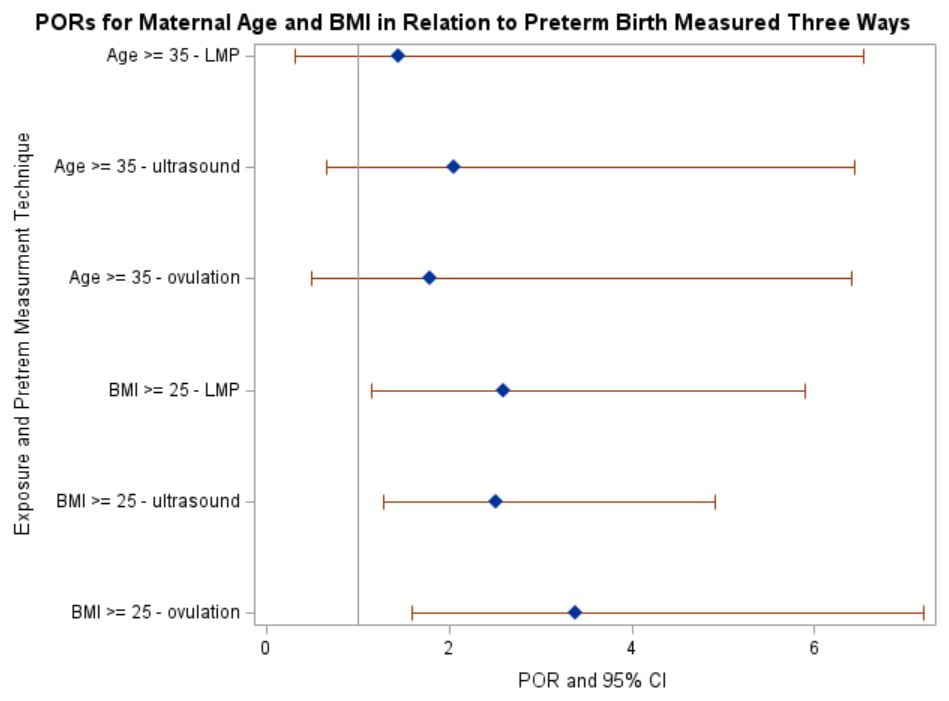LATEBREAKER
Reproductive
Impact of Gestational Age Measurement Technique on Estimated Associations of Maternal Age and Body Mass Index (BMI) with Birth Outcomes Ginna Doss* Ginna Doss Julie Daniels Sunni Mumford Charles Poole Anne Steiner Anne Marie Jukic
Background
Measurement error of gestational age (GA) at birth may influence the detection of factors which are associated with preterm birth. Our objective was to show how exposure-outcome associations are impacted by GA measurement technique.
Methods
We included 387 participants who delivered a live birth in the Effects of Aspirin in Gestation and Reproduction (EAGeR) trial. We calculated prevalence odds ratios (PORs) for the associations of dichotomized maternal age and body mass index (BMI) with preterm birth when GA at birth was measured three ways: prospectively recorded last menstrual period (LMP), ovulation tracking by fertility monitor, and early first trimester ultrasound crown-rump length. Based on both clinical guidelines and Akaike’s information criterion, age was dichotomized as <35 and ≥35 years and BMI was dichotomized as <25 and ≥25 kg/m2.
Results
GAs were shorter when measured by ultrasound (10.2% of births preterm) and longer when measured by LMP (6.6% of births preterm). Ovulation classified 8.4% of births preterm. The association between BMI and preterm birth was strongest when GA was measured by ovulation with higher BMI associated with 3.38 times the odds of preterm birth (95% Confidence Interval (CI)): (1.59, 7.19) and weakest when assessed by LMP (POR 2.60 CI: 1.15, 5.89). The association between maternal age and preterm birth was strongest when GA was measured by ultrasound (POR 2.06 CI: 0.66, 6.43) and weakest when measured by LMP (POR 1.44 CI: 0.32, 6.54). Precision of estimates varied by method with ultrasound assessment of preterm birth providing the smallest confidence limit ratios.
Conclusion
Although the direction of the associations between maternal age and BMI with preterm birth was consistent for all three measurement techniques, the strength of the associations and confidence interval widths differed. Preterm birth measurement technique warrants consideration for its potential to alter both the strength and precision of findings.

